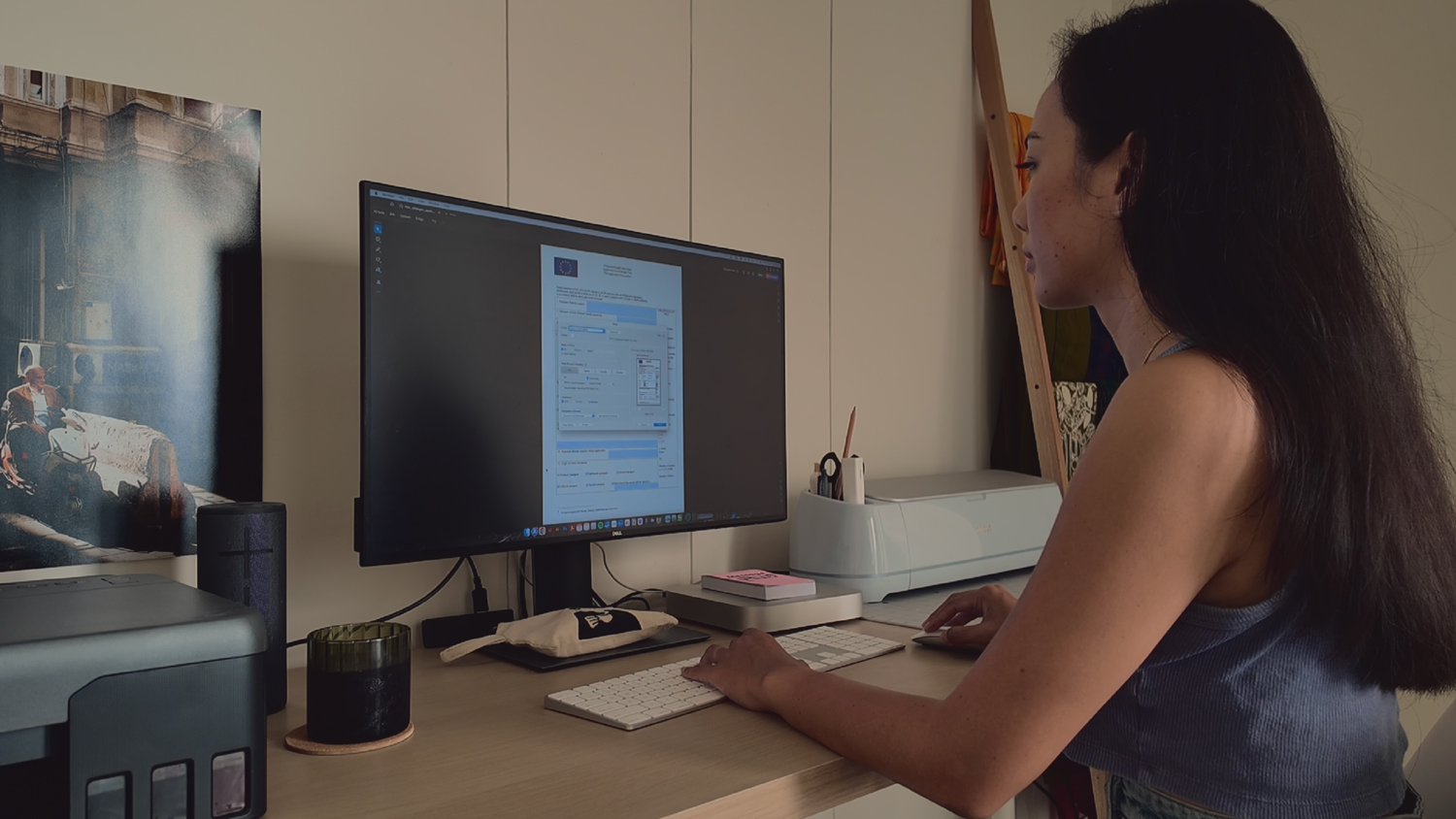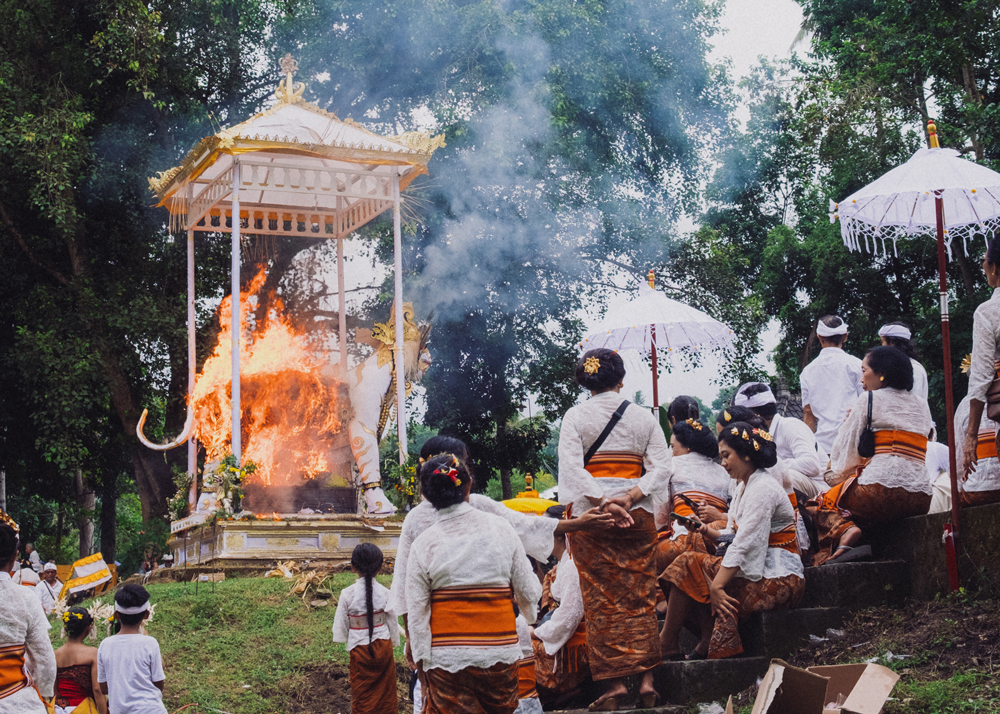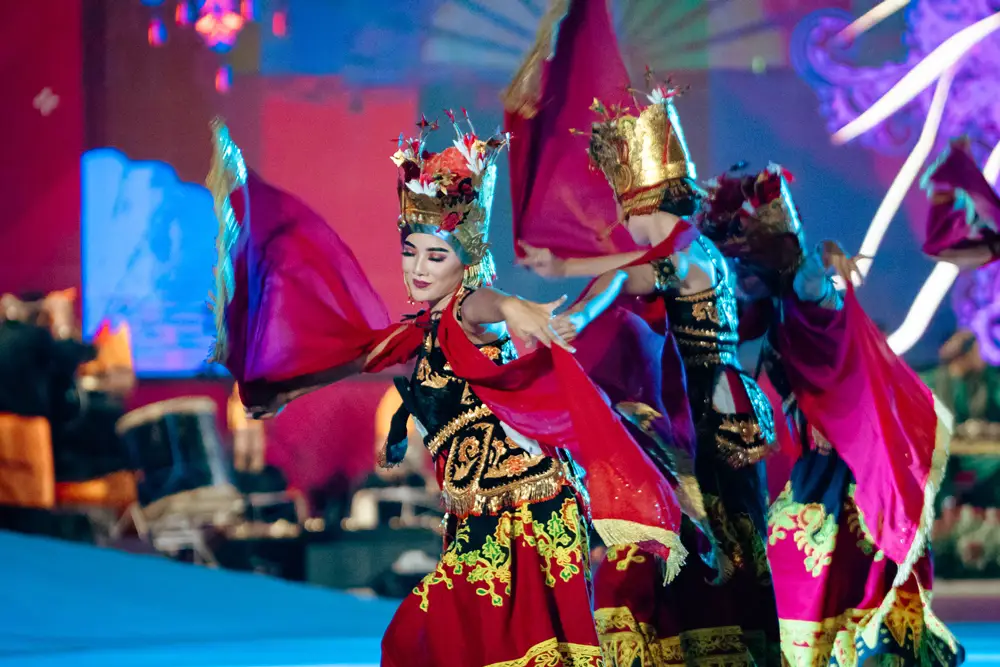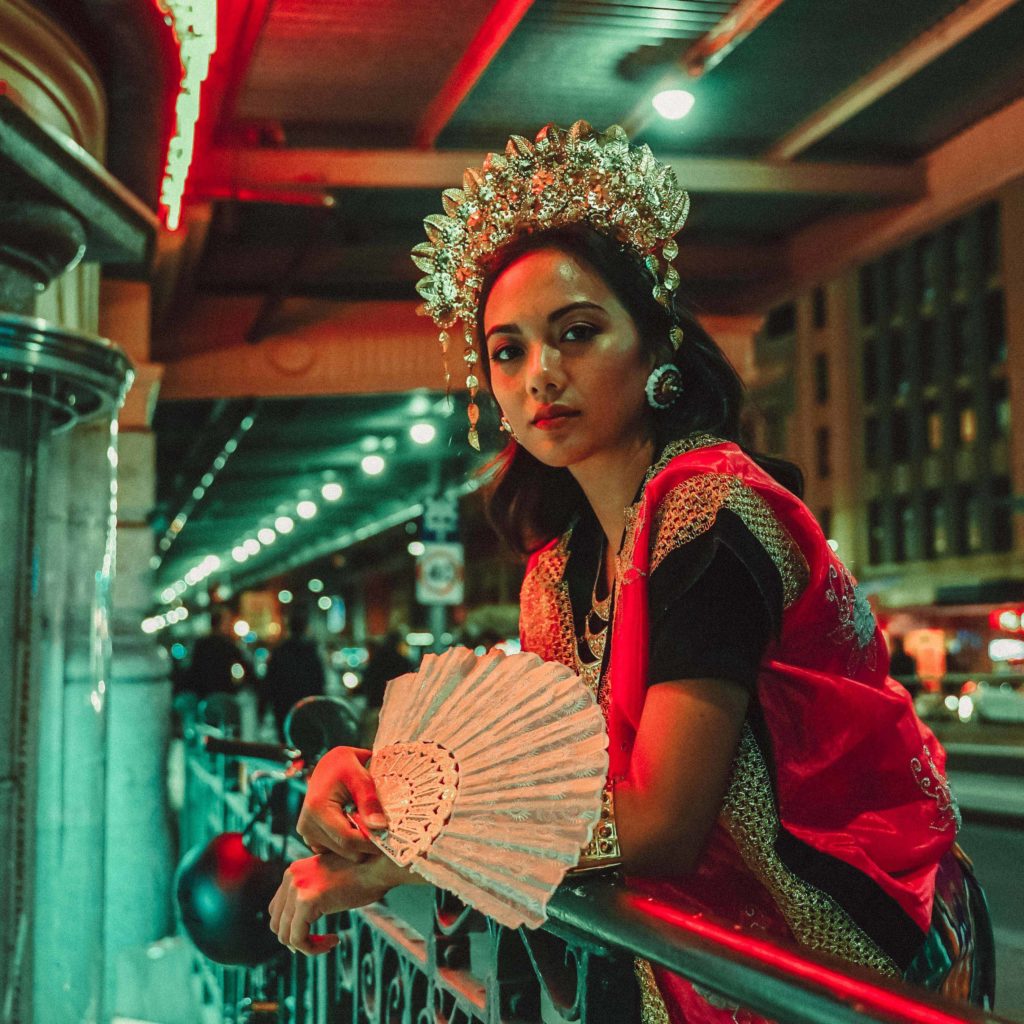Discovering Myself: Navigating Through An Identity Crisis
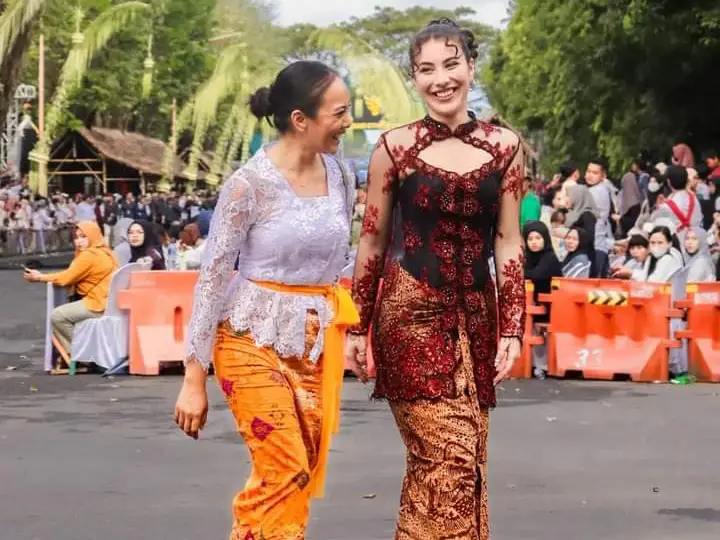
now you’re speaking my language
I grew up in an Indonesian speaking household. Since all my siblings and I were born in Australia, our parents emphasised the importance of being able to speak Indonesian to maintain a connection with our relatives in Indonesia. To reinforce this, we had to speak in Indonesian at home. However, when we were outside, we had the freedom to switch to English, a language I picked up by watching shows like Sesame Street and Cartoon Connection.
By the time I entered Pre-School, even though I could understand two languages, I wasn’t aware of how much I mixed them when I spoke. If an English word slipped my mind, I’d smoothly replace it with the Indonesian equivalent, and vice versa. This became problematic when I started Primary School where all but one person in my class could understand Indonesian, so being the introvert that I was, I stuck to this one friend knowing that I wouldn’t have any problems communicating with her. This was all well and good until she moved schools, and I was left to fend for myself on my final year of Primary School. When I tell you I cried…
When I hit high school, I noticed a change in the way I spoke with my family. I was unintentionally leaning more towards English during our conversations. I still remember the day I realised that my thoughts had completely shifted to English. While I was noticing the improvement in my English fluency, high school introduced a fresh set of challenges. Kids at school made fun of my name, poked jokes about my facial features, and tossed around cultural slurs like ‘chocolate milkshake’, which in hindsight is delicious, but at the time, it was used to put me down. Even though I attended a multicultural school, racism seemed to be at an all-time high. These comments might have been meant as jokes, but they made me feel like I didn’t fit in. So, in an attempt to blend in, I tried things like using skin-whitening creams to lighten up my skin tone and even attempted a little DIY nose job by squeezing the bridge, hoping to make it less flat.
You’re too Western
Midway through high school, my parents decided to send me to Jakarta, Indonesia, feeling that I was becoming too ‘westernised.’ The transition to Indonesia was a complete culture shock. I went from commuting to school by car or on foot and having meals from the school canteen to riding a becak or scooter to school and enjoying food from a gerobak. At school, I was known as that kid from Australia. Walking down the corridors, I’d hear other students calling out “Eh! Kangguru!” and faced laughter when attempting to speak Indonesian because of my imperfect accent. Once again, I found myself feeling out of place, contemplating changes to fit in.
So, if I don’t fit in Australia, and I don’t fit in Indonesia, where do I fit in?
After a year in Jakarta, I found myself effortlessly communicating in Indonesian, even using random filler words to express myself. Beyond just the language, I developed a genuine appreciation for Indonesian culture and its way of life. With my progress pleasing my parents, it was time to head back to Australia. Mission accomplished!
When I returned to high school in Australia, I found myself with a renewed sense of identity. Proud of my Indonesian heritage, yet equally excited to be back in an English-speaking environment. However, for the first few weeks, I couldn’t stop unintentionally inserting random Indonesian filler words into my sentences. This became a little frustrating, not just because I couldn’t get my point across like I wanted, but also because my mates were like, “huh?”. I knew I needed to somehow learn to embrace these 2 sides of me.
Side 1: I’m 100% Indonesian
Side 2: I was born & raised in Australia
So that makes me… a cassette tape? Ugh… I don’t know.
Fight the power
In the late 90s my neighbourhood started seeing a rise in racism, vandalism, drugs and theft. My dad was worried about me and my siblings and drew on his knowledge in traditional health and fitness to combat this. So, in place of watching Video Hits every Saturday morning, as a family we learned ‘Satria Nusantara’ – An Indonesian form of martial arts, which is incredibly interesting and deserves its own blog post, which I’ll do on a later date. Essentially, this martial art uses a series of meditation and breathing techniques to draw energy from the earth, which is transferred into your body and then released through your hands. I like to compare it to something like Dragon Ball Z. As a family, we consistently practiced this martial arts once a week for months, each time noticing changes to our bodies energy and the affects it had on one another. Something as simple as opening a door or even standing near each other became difficult as we’d almost always get electric shocks from the electric currents running through our bodies. As interesting as all this is thinking back on the situation, as a pre-teen, all I really wanted to do was watch Rage or Video Hits on TV. So I slowly stopped practicing martial arts, so I could record my favourite video clips onto VHS tapes and learn the choreography to the dances instead.
Fast forward to September 11, and now not only do we have racism to worry about, we also had islamophobia. My dad urged me to take on martial arts again, but Satria Nusantara was still not cool enough in my eyes, I wanted to do something more well known to the western world, so I took up Tae Kwon Do. Funny how I replaced one form of traditional asian martial arts with another and somehow it was cooler just because people knew what it was. I ended my martial arts training once I received my black belt, and (according to my dad) I was ready and equipped to face the world safely – able to defend myself should anything happen. So now that I was free to see the world, I went back to what I was passionate about… dance.
Dancing in circles
My passion for dance started from a young age. At the age of 10 I formed a dance group with my besties called ‘Heart & Soul’, my sister would choreograph dances for us to perform at Indonesian cultural events, which come to think of it, didn’t really make sense for a cultural event, since we were dancing to non Indonesian songs like TLC’s Waterfalls – But I guess it would have just been a cute thing for the guests to watch as an event filler. Not long after that I started learning traditional Indonesian dance at the Indonesian Consulate in Melbourne and performed at my first show at the Moomba Parade Festival in 1997, performing a Sundanese dance, Tari Anjasmara. This all stopped when I took up martial arts, and then continued again in the early 2000s where I started to take classes in Hip Hop, Popping, Locking, House, Waacking and any other style of dance I could get my hands on. I was addicted. But somehow I still felt there was something missing.
One day while attending a Multicultural event in Melbourne, I came across Sanggar Lestari Melbourne performing Tari Puspanjali on stage. I awkwardly walked up to them after their performance and asked if I could join their dance group, and the very next week I started my journey with the Lestari Family. During my time with Sanggar Lestari, there were moments where Lestari were invited to join Government funded cultural programs in Indonesia, to learn about arts and culture. However these programs were only open to Australian Citizens. Unfortunately I was never able to join these exchange programs, simply because I was an Indonesian citizen. At times it was tough – I would often feel left-behind and defeated. Even though I was happy for the group having such incredible opportunities and thankful for the knowledge they would bring back, it felt unfair that I lived almost all of my life in Australia, and the Indonesian government would never give me the same opportunity as foreign citizens.
So I took it upon myself to move to Indonesia and fund my own way to learn about traditional Indonesian Arts and Culture. A couple of months into my move, I was given the opportunity to join the Indonesian Arts & Culture Scholarship program where people from all over the world would come to Indonesia and learn about Indonesian arts and culture. Although I was an Indonesian living in Indonesia, to be accepted into the program, I would need to register with the Indonesian Consulate in Melbourne, Australia who would act as my place of origin. This was a round about way of doing things, but I really didn’t want to miss this opportunity, so I took it.
Mid way through the IACS program, my group of 9 awardees from Australia (x2 Including myself), Philippines, Kazakhstan, Timor Leste, Malaysia, Russia, India and Indonesia, took part in a Parade in Banyuwangi. For this parade, we were all asked to wear our traditional costumes from our respective countries. I had a hard time trying to figure out what this costume would be for me and my friend, Yasmin, who was also representing Australia. Yasmin, being half-Indonesian, also understood my position in this situation. We both come from Indonesian backgrounds, grew up in Australia, and at times struggle to figure out where we fit in both worlds.
Since Australia is a multicultural country and doesn’t technically have a traditional costume, we decided to wear the traditional costumes from our Indonesian backgrounds. I wore a traditional Balinese costume, and Yasmin wore a traditional Javanese costume. As we stood backstage, all of us beautifully dressed in our traditional costumes, one by one we were introduced by our countries and names to join the parade. “Sasha from Russia!” Sasha walks out in her traditional Russian costume, “Assel from Kazakhstan!” Assel walks out in her traditional Kazakh costume… and finally right at the end, “Deena & Yasmin from Australia” and we both walked out in our traditional Indonesian costumes. Never have I ever been more confused than that moment right there. Here I am, a 100% Indonesian girl, living in Indonesia, representing Australia in a Balinese outfit. Out of all the years of not feeling accepted for who I am, this was one of the hardest moments of my life. I walked down this ridiculously long cat-walk like strip, waving to the crowd with a brave smile on my face after being called out to walk as a representative of Australia. A place that I feel, has never truly accepted me as its own, because of the colour of my skin and the culture I practice, although I was born and raised in Australia, my official papers say my nationality is Indonesian. The moment that I’m introduced as being Australian, I’m feeling and looking the most Indonesian I’ve ever been. So who am I? What am I?
I had a complete melt down that night. My identity crisis hit me like a ton of bricks.
Looking back at these moments throughout my life, I can’t help but wonder why I let these memories sometimes bother me. All of these things shaped my life to become what it is today – my unique story. I guess we need to remind ourselves to stop trying to fit into a mould, stop comparing ourselves to others and embrace our differences. Every part of my upbringing – the people I have met, the places I have been, the languages I’ve learned, and things i’ve experienced along the way – have enabled me to become the person I am today. And to be honest, deep down, I know I have become someone I can be proud of.

